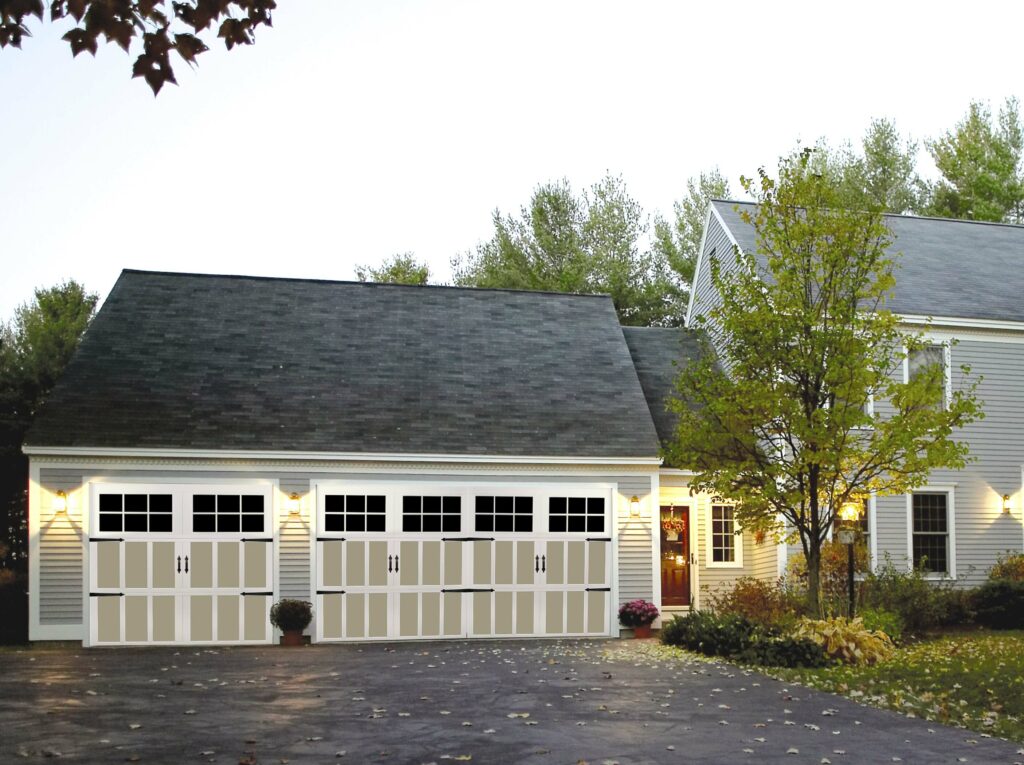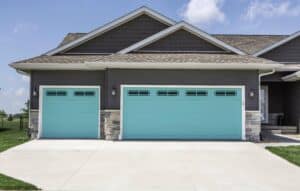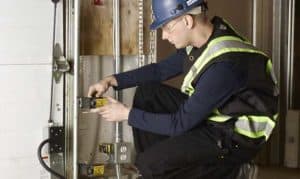As seasons change, so do the needs of your garage door. Regular maintenance not only ensures smooth operation but also prolongs the life of your garage door. In this guide, we will walk you through a seasonal maintenance checklist tailored to keep your garage door in top shape all year round. Whether you’re tackling a weekend DIY project or planning professional maintenance, these tips will help you ensure your garage door’s longevity and safety.
Spring Maintenance Tasks
With the arrival of spring, it’s the perfect time to refresh and maintain your garage door to ensure its optimal performance throughout the year. The transition from winter to spring brings a change in weather that can affect the functionality and lifespan of your garage door. Here are essential spring maintenance tasks to keep your garage door in top shape.
Clean Your Garage Door
Begin your spring maintenance with a comprehensive cleaning of your garage door. Spring weather can leave a buildup of dirt, grime, and possibly salt residue, which can corrode the door and its components. Use a mild detergent mixed with water and a soft cloth or sponge to clean the door’s exterior gently. Avoid using abrasive cleaners, as they can damage the door’s finish. For metal doors, inspect for rust spots that need to be sanded, primed, and painted. Wooden doors should be checked for peeling or chipped paint that requires touch-ups.

Lubricate Moving Parts
Proper lubrication is vital for the smooth operation of your garage door. Apply a silicone-based lubricant to moving parts, including hinges, rollers, springs, and the opener’s chain or screw. This lubrication helps to prevent rusting and ensures that these parts move freely without resistance. Be cautious not to over-lubricate, as excess lubricant can attract dirt and debris, leading to a buildup that can impede the door’s operation.
Test Door Balance
An unbalanced garage door can strain the opener and reduce the lifespan of your door. To test the door’s balance, disconnect the opener (usually by pulling the release handle) and manually lift the door halfway up. If the door stays in place without your assistance, it is properly balanced. If it falls or rises, the springs may need adjustment. Spring adjustment can be dangerous and should be handled by a professional garage door technician.
Inspect Weather Sealing
The weather sealant around your garage door plays a crucial role in keeping out rain, wind, and pests. Inspect the sealant for cracks, gaps, or wear and tear. Pay special attention to the bottom seal, which is most susceptible to damage. If you find any issues, replace the sealant or weather stripping. This not only improves the energy efficiency of your garage and home but also protects the interior of your garage from water damage and pests.
Check for Wear and Tear
Spring is an excellent time to inspect all components of your garage door for signs of wear and tear. Look for loose or worn hinges, damaged rollers, frayed cables, and rusted springs. These components are under significant tension and, if they fail, can pose safety risks. If you’re not comfortable performing these checks or if you identify any problems, contact a professional garage door service to make the necessary repairs.
Summer Upkeep
The summer season brings not just warmth and sunshine but also a set of challenges for your garage door. High temperatures and increased humidity can have a significant impact on the door’s materials and its mechanical components. Here’s a detailed guide to ensure your garage door remains in peak condition during the hotter months.
Inspect and Adjust Opener Settings
The heart of your garage door’s functionality is its opener. Summer’s fluctuating temperatures can cause metals to expand, potentially altering the tension in springs and affecting the opener’s efficiency. Begin by inspecting the opener’s settings. Look for signs of struggle or uneven movement as the door operates. If the door seems to be opening slower or faster than usual, or if it stops before fully opening or closing, it might be time to adjust the opener’s force settings. This is a straightforward procedure for most garage door openers, usually involving a screw or knob on the unit that adjusts how much force is used to open and close the door.
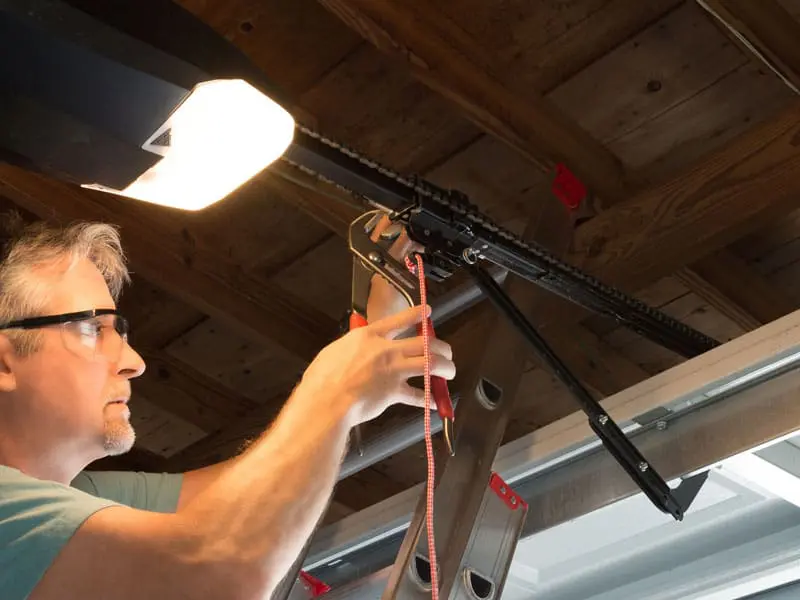
Battery Replacement in Remotes
One of the most overlooked aspects of garage door maintenance is the remote control battery life. The convenience of a remote can quickly turn into frustration when batteries die unexpectedly.
Summer is the perfect time to replace the batteries in your remote controls and keypads. This preemptive step ensures you’re never left outside in the heat, waiting to get into your garage.
Track Cleaning and Maintenance
The tracks guide your garage door smoothly up and down. However, over time, they can accumulate dirt, debris, and even small obstructions that can hinder movement. During summer, it’s crucial to clean these tracks meticulously.
Turn off the power to your garage door opener for safety, then use a cloth or brush to clean inside the tracks. Avoid using water or lubricants inside the tracks, as this can attract more dirt. If you notice any misalignment or damage to the tracks, it’s wise to call a professional. Misaligned tracks can cause significant damage to the door over time.
Lubrication of Moving Parts
After cleaning, lubricating the moving parts of your garage door is an essential step, especially in summer. Heat can cause parts to expand and contract, leading to increased friction and wear.
Use a silicone-based lubricant (avoid WD-40, as it’s more of a cleaner than a lubricant) on rollers, hinges, springs, and openers. Proper lubrication ensures smooth operation and can significantly extend the life of these components.
Seal and Insulation Check
Finally, check the weather stripping and insulation around your garage door. The seal at the bottom of the door helps keep heat out during summer (and cold out during winter). If this seal is cracked, brittle, or missing, it’s time for a replacement. Insulation is equally important, especially if your garage is attached to your home. Proper insulation can help keep your garage and home cooler, reducing air conditioning costs.
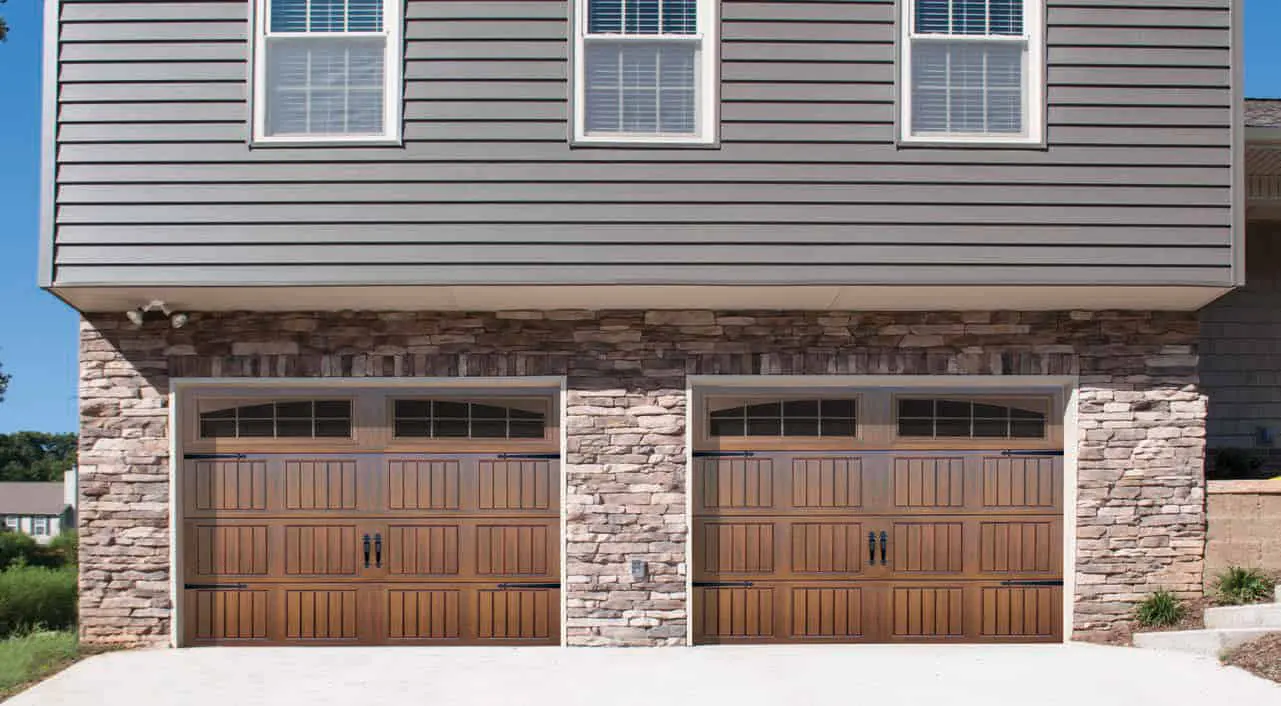
Fall Preparations
As the leaves begin to change and the air grows crisp, it’s a clear sign that winter is on its way. This seasonal shift signals the need for homeowners to prepare their garage doors for the colder months ahead. Fall preparations are crucial in avoiding common winter-related issues such as freezing and sticking. Here’s how you can ensure your garage door is ready for winter’s challenges.
Lubricate Moving Parts
First and foremost, re-lubricate all the moving parts of your garage door. Cold weather can thicken existing lubricant, which may cause the door to move sluggishly or even seize up. Use a silicone-based lubricant to coat rollers, hinges, tracks, and springs. This not only ensures smooth operation but also protects against corrosion that can occur due to moisture and road salt, commonly used during winter months.
Inspect for Wear and Tear
Fall is the perfect time to conduct a thorough inspection of your garage door and its hardware. Look for signs of wear and tear, including frayed cables, bent tracks, and worn rollers and hinges.
These issues can become exacerbated during winter, leading to potential door malfunctions. Addressing these problems early can prevent inconvenient and potentially hazardous situations during the colder months.
Check Door Insulation and Seals
Your garage door’s insulation and seals play a vital role in maintaining your garage’s temperature and energy efficiency. Inspect the door’s insulation to ensure it is still effective. Many garage doors have insulation panels that can degrade over time, leading to heat loss.
Check the weatherstripping around the door and the bottom seal. These components are essential for keeping out cold air, moisture, and even small animals seeking shelter from the cold. If there are gaps, tears, or sections that are brittle and no longer flexible, replace them to maintain a warm and dry garage.
Winter Care Tips
Winter brings unique challenges for maintaining your garage door. Cold temperatures, ice, and snow can affect your garage door’s performance and durability. Here are essential winter care tips to ensure your garage door operates smoothly throughout the colder months.
Keep Opener Batteries Fresh
One simple yet crucial step is to replace the batteries in your garage door opener and remote controls before winter sets in. Cold weather can drain battery power faster than usual, potentially leaving you with a non-operational garage door at the most inconvenient times. Checking and replacing these batteries as part of your winter preparations can save you from unexpected troubles.
Adjust Opener Force Settings
The force with which your garage door opener operates may need adjustment as temperatures drop. Cold weather can cause the lubricant on tracks and rollers to thicken and the door itself to contract slightly, increasing resistance when the door operates.
If you notice the door struggling to open or close, refer to your opener’s manual to adjust the force settings. This adjustment ensures the door operates smoothly, even in colder temperatures.
Install a Battery Backup System
Winter storms often bring power outages that can leave you unable to operate your garage door electronically. Installing a battery backup system for your garage door opener is a wise investment, especially in areas prone to such outages. This system ensures your garage door can still open and close several times during a power outage, providing peace of mind and convenience during winter weather emergencies.

Protect Against Freezing
The bottom of your garage door can freeze to the ground during icy conditions, preventing it from opening. To avoid this, regularly check the bottom seal and weather stripping for ice buildup and gently remove any ice accumulation. Applying a silicone-based lubricant to the bottom rubber seal can also help prevent sticking.
Clear Snow and Ice from Garage Door Area
Regularly clear snow and ice from the driveway and around the garage door. Accumulated snow can freeze and form a solid barrier at the bottom of the door, which can interfere with the door’s operation and damage the bottom seal when you attempt to open it.
Inspect and Maintain Weather Sealing
Cold drafts and moisture can enter through gaps around your garage door, making your garage and home less energy-efficient. Inspect the weather stripping around the garage door for cracks or gaps and replace it if necessary. Ensuring a tight seal helps to keep your garage warmer, reduces energy costs, and protects stored items from cold damage.
Lubricate Moving Parts
Before the cold sets in fully, lubricate the moving parts of your garage door with a silicone-based lubricant. Proper lubrication during winter is crucial because cold temperatures can cause metal parts to contract and move less smoothly. Focus on hinges, rollers, springs, and the opener’s chain or screw. Avoid using grease as it can harden in cold temperatures and attract dirt.
FAQs
Regular maintenance ensures smooth operation and extends the lifespan of your garage door.
Spring maintenance includes cleaning the door, lubricating moving parts, testing the door balance, inspecting weather sealing, and checking for wear and tear.
Use mild detergent mixed with water and a soft cloth to clean the door, avoiding abrasive cleaners.
Heat causes expansion and increased friction; lubrication ensures smooth operation and reduces wear.
Re-lubricate moving parts, inspect for wear and tear, and check insulation and seals to prepare for colder months.
Keep opener batteries fresh, adjust opener force settings, install a battery backup system, protect against freezing, clear snow and ice, and maintain weather sealing.

